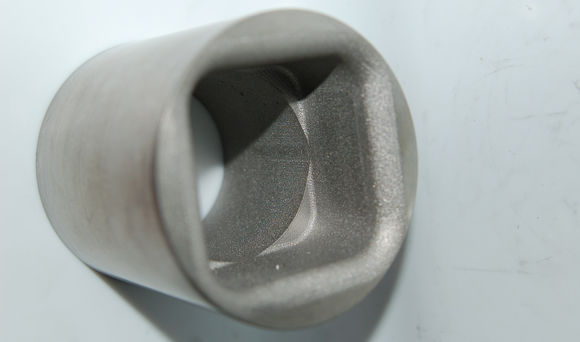Tunnel 9 teams adopts metal AM for high-Mach applications
August 19, 2022

Hypervelocity Wind Tunnel 9, an Arnold Engineering Development Complex site located in White Oak, Maryland, USA, has reported its success in metal Additive Manufacturing parts for use in high-Mach number conditions.
Parts in Tunnel 9 endure cyclical high pressures and temperatures (up to 1649°C), which results in a reduced lifespan for the parts. Refractory metals are used to build these high-temperature parts due to their ability to withstand high heat with relatively little deformation. In February 2020, an R&D project began investigating the use of metal Laser Beam Powder Bed Fusion (PBF-LB) Additive Manufacturing to reduce lead times and manufacturing costs for these refractory parts.
The ongoing research project is led by Samuel Gigioli, System and Nitrogen Supply Engineer, and Nicholas Fredrick, Tunnel 9 Chief Facility Engineer. Together, they work with two contractor teams, one of which additively manufactures the parts and another which supplies the powder and analyses material characteristics. Thus far, the most significant accomplishment of the programme has been the manufacture of a petal orifice liner, a piece situated between the two burst diaphragms that Tunnel 9 uses as a high-speed valve. The component has an outside diameter of approx. 7.62 cm, an inside diameter of approx. 5.08 cm and is approx 7.62 cm in length.
“The [additively manufactured liner] is cheaper to manufacture, quicker to manufacture and deliver, and is more resilient to the cyclic temperature loading,” stated Gigioli. “The AM process creates very unique microstructures within the material and, as a result, the part’s structural and thermal properties are different than traditional wrought billets metal.”
Those involved in Additive Manufacturing at Tunnel 9 have already begun work on the next metal additively manufactured component: a particle separator. This high-Mach-suitable component would act to weed out airborne particles in the gas flow without hindering mass flow within the tunnel. This project is expected to move into testing in autumn of this year.
The success of the Additive Manufacturing programme at Tunnel 9 is said to have sparked conversations among team members about potential future AM projects, as well as drawing the attention of personnel from the US Department of Defense, who is said to have remarked on Additive Manufacturing’s potential.
“Myself and the people involved in this R&D project are excited for what the future holds for AM,” Gigioli said. “Imagine if we scale this process up to multiple tunnel parts or even entire systems. Now some DOD components are interested in printing test models or leading edge models. I hope to continue leading Tunnel 9 down this path and increase our success through this technology.”
















